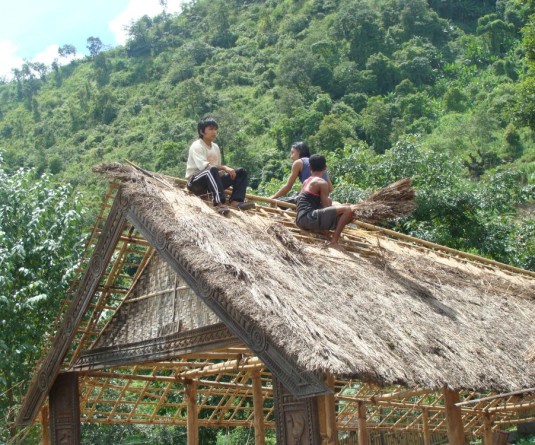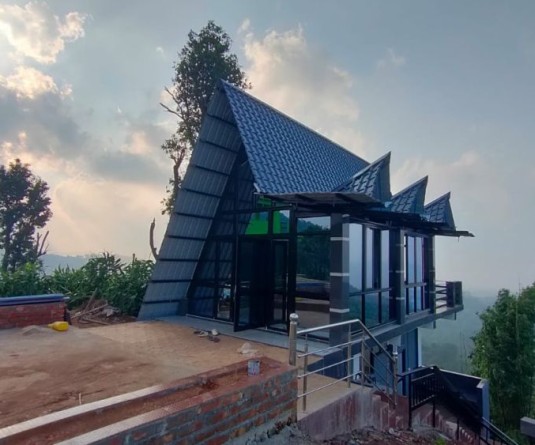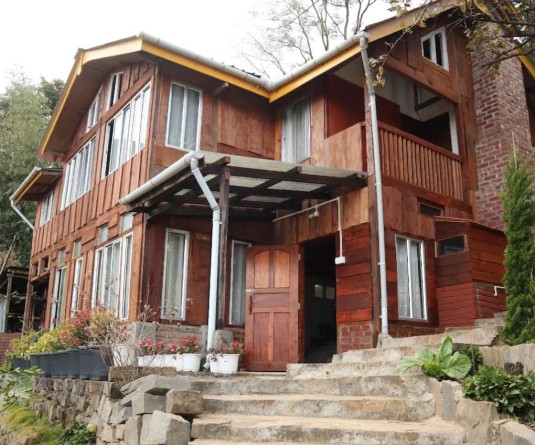A young Aochila a Class II student, collects water from an almost dried up natural water spring at Artang Ward on Saturday, March 9, 2013. The United Nations estimates that more than one in six people worldwide do not have access to 20-50 liters (5-13 gallons) of safe freshwater a day to ensure their basic needs for drinking, cooking and cleaning. (Morung Photo)
Longrangty Longchar
Morung Express News
Dry days are here again. This is the time when water scarcity hits Mokokchung district in its severest form. The natural water springs, which serve as the main source for potable drinking water for the citizens of the town, have dried up and water flow reduced to a mere trickle. The riverbeds have also dried up. Even water carriers are facing a tough time catering to the huge demand for water in the towns. The Public Health Engineering Department (PHED) water pipes remain dry as a bone with customers complaining that they have not received water for a long time this winter.
A young girl called Aochila, a Class II student residing in Artang Ward, sits by a dry water source amidst empty buckets as she waits patiently for the drops of trickling water to collect in one. The water is not suitable for drinking, says her friend Sunepla, but they have to collect it. There is no other option. The children have been fetching water since 4 am.
A little further away, a Mahindra pick-up truck loaded with empty drums readies to fetch water for another customer.
“I have eight more customers,” says Raju the pick-up driver, “but they have to wait till tomorrow.” He says that he buys water from a family in town which has a deep borewell. He pays three hundred rupees for 2000 liters to the family and sells it to his customers for Rs. 1000.
“People are unhappy because we cannot cater to all our customers. As if we have the water and we are not supplying them,” laments Raju. He can hardly make four trips per day to buy water because there are other water carriers who line up, and it is “always first come first basis” for the water carriers.
The brunt of water scarcity is felt everywhere, verging on resentment and anger. “In our colony, the PHED Water Supply chowkidar supplies water to only those who bribe him,” complains a resident of Aongza Ward who wishes not to be named. “We are planning to lodge a complaint with the department. This is not right; there are many families who cannot afford to bribe the chowkidar.”
Many residents have lost faith in the PHE department and have decided to dig wells in their courtyards, while the richer ones have hired mechanized drilling machines to dig deep borewells that reach up to the bedrock water level for their use and also for sale.
“The PHE Department should do something urgently. If they cannot supply regular drinking water, then they should at least encourage water harvesting on community basis or bore deep wells from which residents of colonies can fetch water, because the water pipe is useless. The consumers pay their bills on time but the department does not supply water on time,” says Sashi Jamir, a resident of Artang Ward who has to buy water every week from carriers.
It is learnt that some rich families who can afford to bore a deep well sell their water on weekdays and distribute it free of cost to neighbours on Sundays, ostensibly to solicit god’s blessings. Most citizens now pray for the rain gods to smile on them. But there is fear that rains may be delayed this year since the windy season is not here yet. Traditional knowledge suggests that March winds herald the onset of the monsoon season, and the former’s delay has led to apprehension that the dry spell will continue.
If the PHED does not design concrete measure to address this water scarcity, people will have to continue to depend on the frowns and smiles of rain gods.






